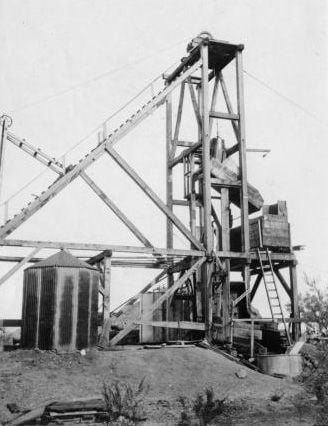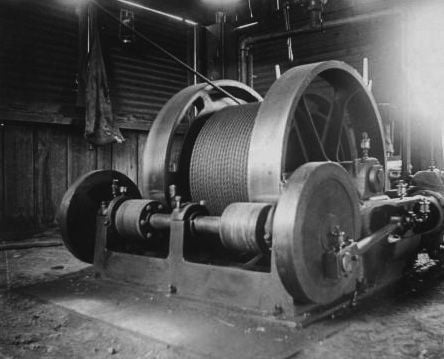Formed 25 million years ago and involving violent steam-blast eruptions caused by magma pressure deep within the earth, the Superstition Mountains are a collapsed volcanic caldera.
Several gold deposits have been discovered amid this landscape composed of basalt, dacite and granite.
One such gold deposit, located in Pinal County 4 miles northeast of Apache Junction on the western slope of the Superstition Mountains in 1892, gave rise to the town of Goldfield.
C.R. Hakes, Orrin Merrill and J.R. Morse are credited with having prospected the site and establishing a camp.
Apaches were of constant concern, including reports of the Apache Kid, who reportedly passed through the area and killed a young boy.
Morse was credited with having discovered the first mining claim, the Lucky Boy. Others soon followed, including the Black King, Black Queen, Mammoth, Mother Hubbard and Tom Thumb. These claims were sold for $20,000.
Mined prior to 1898, the “Mormon stope” proved to be the most productive part of the ore body. Located north of the main shaft, the location included stringers of coarse-grained white quartz and gold-bearing iron oxide.
By 1910, the community of Goldfield became known as Youngsberg after George U. Young, an Arizona politician who served both as secretary and acting territorial governor. It was Young’s finances that contributed to the development of the local mine.
Funding a 50-ton cyanide plant and 10-stamp amalgamation mill, a large steam-driven electric power plant and a boardinghouse for miners, the Young Mines Co. Ltd. mined the area, sinking three shafts and thousands of feet of drifts. The main shaft ran 1,000 feet, and during the company’s years of operation, $67,000 worth of gold and silver were mined from 7,100 tons of ore.
Goldfield was known for its saloons, gambling halls and “wicked women.” The community included a general store, a butcher shop and 29 houses. This boom camp soon reached a population of several thousand fortune hunters and miners.
Water, abundant on the Mammoth claim and other nearby springs, was obtained underground. It was boiled and filtered before being fit to drink. Wood was sold for $2.50 per cord.
The Apache Trail Gold Mining Co. assumed ownership of the property in 1929, with limited production of ore reported during the early 1930s.
The main shaft was deepened from 420 feet to 1,067 feet. An additional 6,591 feet of drifts were also added.
By 1934, workings below the 200-foot level of the mine were underwater, forcing the Goldfield Mining Leasing Co. owner at the time to appropriate measures to “de-water” the mine. Despite installing pumps to de-water the shaft, their attempts failed, with water returning to the 75-foot level.
Up to this point, the Goldfields district, notably the Mammoth Mine, had a reported value of $170,000 in gold.
Challenges beset Goldfield, including varying production from low-grade ore and flooding of the mine from the Mormon stope in 1917.
The loss of the gold vein cut off in a “fault” in 1912 did not help productivity. The post office closed in 1926, and the original bar room, dance hall and gambling house burned to the ground in 1942.
Attempts were made by Alfred Strong Lewis, a former mining engineer for the Young Mining Co., to locate the lost gold vein around Goldfield. Using a 100-ton ball mill, cyanide operation and some open-pit methods, he recovered $45,000 worth of gold bullion.
This mill was later converted to a custom tungsten mill, processing tungsten ore shipments 100 miles away during the Korean War. Core drilling by the Oliver-Clark Mining Contractors in the late 1970s brought further exploration to Goldfield.
Today the Old Wasp Mine is the only operational gold mine around Goldfield. A nearby 5-acre replica townsite (formerly an old mill) functions as a Western theme park, displaying old mining equipment focused on interpretive mining history and entertainment.





